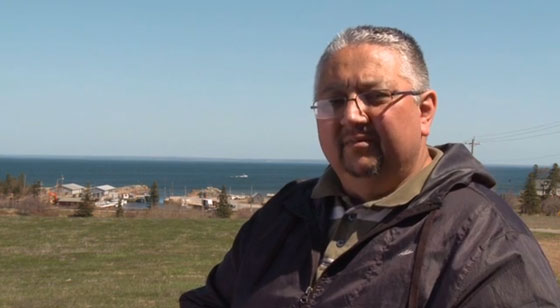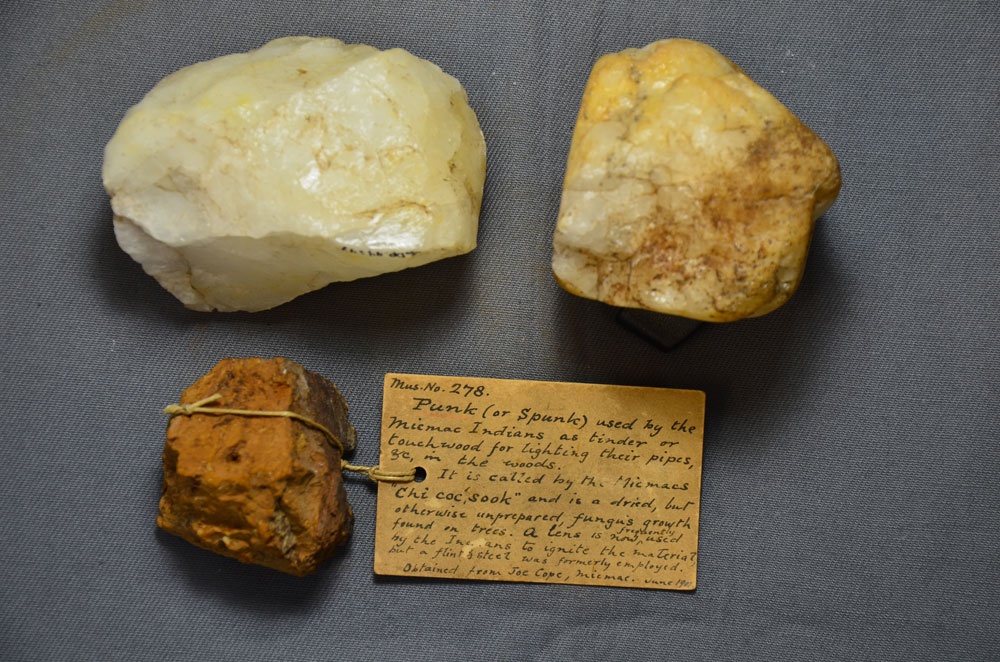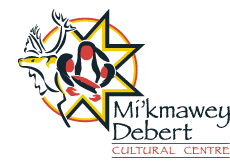
Puktewe'katik Toney River
Very often the Mi’kmaw language holds clues to features of Mi’kma’ki. In this film, Gerald Gloade shares one such story about Toney River, Nova Scotia. Toney River
is recorded in some historical sources as “booktawaagen.” Mi’kmaw linguist Bern Francis explains that today the word is understood and spelled differently. The word for Toney River should be puktewe’katik, which translates to “at the place of fire.” Puktewte’kn is a noun meaning something one might use regularly to strike to cause a fire to begin. A fire striker, in other words. These words stem from the infinitive verb, puktewe’kemk, meaning “to go get fire.” It would be used as follows:
Puktewe’key — I’m going to get fire
Puktewe’ken — You’re going to get fire
Puktewe’ket — S/he is going to get fire
I’-puktewe’kemk means “where one typically goes to get fire.”

This picture shows an example of a Mi’kmaw fire-starter kit with puktewte’kn from the early 20th century. In this example, the iron pyrite is missing, but shows the quartz and the punk (a tree fungus), which was used as tinder. People would strike the quartz and pyrite together to create a spark that would alight the tinder. The note was written by Nova Scotia Museum Curator Harry Piers. Initially, MDCC staff believed that Toney River might be a source for iron pyrite used in fire starting kits. The story we uncovered was a great deal more interesting! From the collections of the Nova Scotia Museum, Archaeology Collections, Halifax, NS.


 sharing our stories
sharing our stories
Hello. I will love using this website with my grade 7 science students, but the video isn’t working. This website is beautiful, and will help so very much when my students are learning about two-eyed seeing this year, but I know students will be disappointed if they try the videos and they don’t work.
Good afternoon,
We’re so happy that you find our website useful. The videos seem to be working on our end. Perhaps make sure the internet connection is strong and/or restarting you computer. If you’re still experiencing difficulty, please contact us directly at 1 877 892 2424 and we will be happy to help you. Have a great day!
Thank you very much. I’ve just enjoyed all of the videos at home without any problem, so I’ll get some technical help at school to try to solve the problem there. I can’t tell you how excited I am to plan geology lessons using the wonderful information here. I am proud to be able to invite my students to explore this site and learn more about Netukulimk and two-eyed seeing. I’ve never been more excited to be a Nova Scotian educator. Thank you!